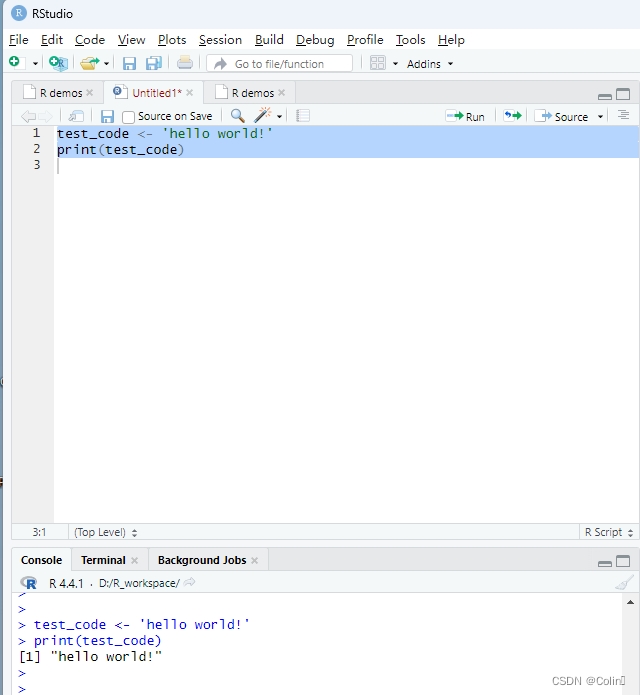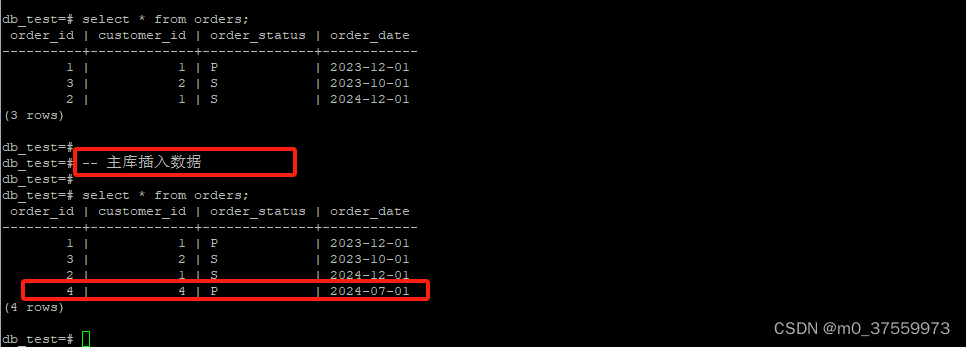Linux中的workqueue机制就是为了简化内核线程的创建。通过调用workqueue的接口就能创建内核线程。并且可以根据当前系统的CPU的个数创建线程的数量,使得线程处理的事务能够并行化。
工作队列(workqueue)是另外一种将工作推后执行的形式。工作队列可以把工作推后,交由一个内核线程去执行,也就是说,这个下半部分可以在进程上下文执行。最重要的就是工作队列允许被重新调度甚至睡眠。
为什么需要工作队列?
在内核代码中,经常会遇到不能或不合适马上调用某个处理过程,此时希望将该工作推给某个内核线程执行,这样做的原因有很多,比如:
- 中断触发了某个过程的执行条件,而该过程执行时间较长或者会调用导致睡眠的函数,则该过程不应该在中断上下文中立即被调用。
- 类似于中断,一些紧急性的任务不希望执行比较耗时的非关键过程,则需要把该过程提交到低优先级线程执行。比如一个轮询的通信接收线程,它需要快速完成检测和接收数据,而对数据的解析则应该交给低优先级线程慢慢处理。
- 有时希望将一些工作集中起来以获取批处理的性能;或者合并缩减一些执行线程,减少资源消耗。
基于以上需求,人们开发除了工作队列这一机制。工作队列不光在操作系统内核中会用到,一些应用程序或协议栈也会实现自己的工作队列。
工作队列的概念
工作队列(workqueue):是将操作(或回调)延期异步执行的一种机制。工作队列可以把工作推后,交由一个内核线程去执行,并且工作队列是执行在线程上下文中,因此工作队列执行过程中可以被重新调度、抢占、睡眠。
工作项(work item):是工作队列中的元素,是一个回调函数和多个回调函数参数的集合,有时也会有额外的属性成员,总之通过一个结构体即可记录和描述一个工作项。
关键数据结构
work_struct
struct work_struct {
atomic_long_t data;
struct list_head entry;
work_func_t func;
#ifdef CONFIG_LOCKDEP
struct lockdep_map lockdep_map;
#endif
ANDROID_KABI_RESERVE(1);
ANDROID_KABI_RESERVE(2);
};workqueue_struct
如何传参?
func的参数是一个work_struct指针,指向的数据就是定义func的work_struct。
看到这里,会有两个疑问:
第一:如何把用户的数据作为参数传递给func呢?
第二:如何实现延迟工作?
解决第一个问题:工作队列需要把work_struct定义在用户的数据结构中,然后通过container_of来得到用户数据。
对于第二个问题,新的工作队列把timer拿掉的用意是使得work_struct更加单纯。首先回忆一下以前的版本,只有在需要延迟执行工作时才会用到timer,普通情况下timer是没有意义的,所以之前的做法在一定程序上有些浪费资源。所以新版本中,将timer从work_struct中拿掉,然后又定义了一个新的结构delayed_work用于延迟执行。
struct delayed_work {
struct work_struct work;
struct timer_list timer;
};API介绍
不是所有的驱动程序都必须有自己的工作队列。驱动程序可以使用内核提供的缺省工作队列。由于这个工作队列由很多驱动程序共享,任务可能会需要比较长一段时间才能开始执行。为了解决这一问题,工作函数中的延迟应该保持最小或者不要延时。
创建工作队列
每个工作队列由一个专门的线程(即一个工作队列一个线程),所有来自运行队列的任务在进程的上下文中运行(这样它们可以休眠)。驱动程序可以创建并使用它们自己的工作队列,或者使用内核的一个工作队列。
//创建工作队列
struct workqueue_struct *create_workqueue(const char *name);创建工作队列的任务
工作队列任务可以在编译时或者运行时创建。
//编译时创建
DECLARE_WORK(name, void (*function)(void *), void *data);
//运行时创建
INIT_WORK(struct work_struct *work, void (*function)(void *), void *data);将任务添加到工作队列中
//添加到指定工作队列
int queue_work(struct workqueue_struct *queue, struct work_struct *work);
<br>
int queue_delayed_work(struct workqueue_struct *queue, struct work_struct
<br>
*work, unsigned long delay);
//添加到内核默认工作队列
int schedule_work(struct work_struct *work);
int schedule_delayed_work(struct work_struct *work, unsigned long delay);delay:保证至少在经过一段给定的最小延迟时间以后,工作队列中的任务才可以真正执行。
队列和任务的清除操作
//取消任务
int cancel_delayed_work(struct work_struct *work);
//清空队列中的所有任务
void flush_workqueue(struct workqueue_struct *queue);
//销毁工作队列
void destroy_workqueue(struct workqueue_struct *queue);举例
struct my_struct_t {
char *name;
struct work_struct my_work;
};
void my_func(struct work_struct *work)
{
struct my_struct_t *my_name = container_of(work, struct my_struct_t, my_work);
printk(KERN_INFO “Hello world, my name is %s!\n”, my_name->name);
}
struct workqueue_struct *my_wq = create_workqueue(“my wq”);
struct my_struct_t my_name;
my_name.name = “Jack”;
INIT_WORK(&(my_name.my_work), my_func);
queue_work(my_wq, &my_work);工作原理
workqueue是内核里面很重要的一个机制,特别是内核驱动,一般的小型任务(work)都不会自己起一个线程来处理,而是扔到workqueue中处理。workqueue的主要工作就是用进程上下文来处理内核中大量的小任务。
所以workqueue的主要涉及思想:一个是并行,多个work不要相互阻塞。另一个是节省资源,多个work尽量共享资源(进程、调度、内存),不要造成系统过多的资源浪费。
为了实现设计思想,workqueue的设计
实现也更新了很多版本。最新的workqueue实现叫做CMWQ(concurrency Managed Workqueue),也就是用更加只能的算法来实现“并行和节省”。新版本的workqueue创建函数改成alloc_workqueue(),旧版本的函数create_workqueue()逐渐会被废弃。
CMWQ的几个基本概念
关于workqueue中几个概念都是work相关的数据结构,非常容易混淆,大概可以这样理解。
1)work:工作
2)workqueue:工作集合。workqueue和work是一对多的关系
3)worker: 工人。在代码中worker对应一个work_thread()内核线程
4)worker_pool: 工人的集合。worker_pool和worker是一对多的关系
5)PWQ(pool_workqueue):中间人/中介,负责建立workqueue和worker_pool之间的关系,workqueue和pwq是一对多的关系,pwq和worker_pool是一对一的关系。
worker_pool
每个执行work的线程叫做worker,一组worker的结合叫做worker_pool。CMWQ的精髓就在worker_pool里面的worker的动态增减的管理上 manage_workers()。
CMWQ对worker_pool分成两类:
normal worker_pool,给通用的workqueue使用;
unbound worker_pool,给WQ_UNBOUND类型的workqueue使用;
normal worker_pool
默认work是在normal worker_pool中处理的。系统的规划是每个CPU创建两个normal worker_pool:一个Nomal的优先级(nice=0),一个高优先级(nice=HIGHPRI_NICE_LEVEL),对应创建出来的worker进程的nice不一样。
每个worker对应一个worker_thread()内核线程,一个worker_pool包含一个或者多个worker,worker_pool中worker的数量是根据worker_pool中work的负载来动态增减的。
我们可以通过ps aux | grep kworker命令来查看所有worker对应的内核线程,normal worker_pool对应内核线程(worker_thread())的命名规则是这样的:
snprintf(id_buf, sizeof(id_buf), "%d:%d%s", pool->cpu, id,
pool->attrs->nice < 0 ? "H" : "");
worker->task = kthread_create_on_node(worker_thread, worker, pool->node,
"kworker/%s", id_buf);
so 类似名字是 normal worker_pool:
shell@PRO5:/ $ ps | grep "kworker"
root 14 2 0 0 worker_thr 0000000000 S kworker/1:0H // cpu1 高优先级 worker_pool 的第 0 个 worker 进程
root 17 2 0 0 worker_thr 0000000000 S kworker/2:0 // cpu2 低优先级 worker_pool 的第 0 个 worker 进程
root 18 2 0 0 worker_thr 0000000000 S kworker/2:0H // cpu2 高优先级 worker_pool 的第 0 个 worker 进程
root 23699 2 0 0 worker_thr 0000000000 S kworker/0:1 // cpu0 低优先级 worker_pool 的第 1 个 worker 进程
unbound worker_pool
大部分的work都是通过normal worker_pool来执行的(例如通过schedule_work()、schedule_work_on()压入到系统workqueue中的work),最后都是通过normal worker_pool中的worker来执行的。这些worker是和某个CPU绑定的,work一旦被worker开始执行,都是一直运行到某个CPU上的,不会切换CPU。
unbound worker_pool相对应的意思,就是worker可以在多个CPU上调度。但是它其实也是绑定的,只不过它绑定的单位不是CPU,而是node,所谓的node是对NUMA(Non uniform Memory Access Architecture)系统来说的,NUMA可能存在多个Node,每个node可能包含一个或者多个CPU。
unbound worker_pool对应内核线程(worker_thread())的命名规则是这样的:
snprintf(id_buf, sizeof(id_buf), "u%d:%d", pool->id, id);
worker->task = kthread_create_on_node(worker_thread, worker, pool->node,
"kworker/%s", id_buf);
so 类似名字是 unbound worker_pool:
shell@PRO5:/ $ ps | grep "kworker"
root 23906 2 0 0 worker_thr 0000000000 S kworker/u20:2/* unbound pool 20 的第 2 个 worker 进程*/
root 24564 2 0 0 worker_thr 0000000000 S kworker/u20:0/* unbound pool 20 的第 0 个 worker 进程*/
root 24622 2 0 0 worker_thr 0000000000 S kworker/u21:1/* unbound pool 21 的第 1 个 worker 进程*/
worker
每个worker对应一个worker_thread()内核线程,一个worker_pool对应一个或者多个worker。多个worker从同一个链表中worker_pool->worklist获取work进行处理。
这其中有几个重点:
- worker怎么处理work;
- worker_pool怎么动态管理worker的数量;
worker处理work
处理 work 的过程主要在 worker_thread() -> process_one_work() 中处理,我们具体看看代码的实现过程。
kernel/workqueue.c: worker_thread() -> process_one_work()
static int worker_thread(void *__worker)
{
struct worker *worker = __worker;
struct worker_pool *pool = worker->pool;
/* tell the scheduler that this is a workqueue worker */
worker->task->flags |= PF_WQ_WORKER;
woke_up:
spin_lock_irq(&pool->lock);
// (1) 是否 die
/* am I supposed to die? */
if (unlikely(worker->flags & WORKER_DIE)) {
spin_unlock_irq(&pool->lock);
WARN_ON_ONCE(!list_empty(&worker->entry));
worker->task->flags &= ~PF_WQ_WORKER;
set_task_comm(worker->task, "kworker/dying");
ida_simple_remove(&pool->worker_ida, worker->id);
worker_detach_from_pool(worker, pool);
kfree(worker);
return 0;
}
// (2) 脱离 idle 状态
// 被唤醒之前 worker 都是 idle 状态
worker_leave_idle(worker);
recheck:
// (3) 如果需要本 worker 继续执行则继续,否则进入 idle 状态
// need more worker 的条件: (pool->worklist != 0) && (pool->nr_running == 0)
// worklist 上有 work 需要执行,并且现在没有处于 running 的 work
/* no more worker necessary? */
if (!need_more_worker(pool))
goto sleep;
// (4) 如果 (pool->nr_idle == 0),则启动创建更多的 worker
// 说明 idle 队列中已经没有备用 worker 了,先创建 一些 worker 备用
/* do we need to manage? */
if (unlikely(!may_start_working(pool)) && manage_workers(worker))
goto recheck;
/*
* ->scheduled list can only be filled while a worker is
* preparing to process a work or actually processing it.
* Make sure nobody diddled with it while I was sleeping.
*/
WARN_ON_ONCE(!list_empty(&worker->scheduled));
/*
* Finish PREP stage. We're guaranteed to have at least one idle
* worker or that someone else has already assumed the manager
* role. This is where @worker starts participating in concurrency
* management if applicable and concurrency management is restored
* after being rebound. See rebind_workers() for details.
*/
worker_clr_flags(worker, WORKER_PREP | WORKER_REBOUND);
do {
// (5) 如果 pool->worklist 不为空,从其中取出一个 work 进行处理
struct work_struct *work =
list_first_entry(&pool->worklist,
struct work_struct, entry);
if (likely(!(*work_data_bits(work) & WORK_STRUCT_LINKED))) {
/* optimization path, not strictly necessary */
// (6) 执行正常的 work
process_one_work(worker, work);
if (unlikely(!list_empty(&worker->scheduled)))
process_scheduled_works(worker);
} else {
// (7) 执行系统特意 scheduled 给某个 worker 的 work
// 普通的 work 是放在池子的公共 list 中的 pool->worklist
// 只有一些特殊的 work 被特意派送给某个 worker 的 worker->scheduled
// 包括:1、执行 flush_work 时插入的 barrier work;
// 2、collision 时从其他 worker 推送到本 worker 的 work
move_linked_works(work, &worker->scheduled, NULL);
process_scheduled_works(worker);
}
// (8) worker keep_working 的条件:
// pool->worklist 不为空 && (pool->nr_running <= 1)
} while (keep_working(pool));
worker_set_flags(worker, WORKER_PREP);supposed
sleep:
// (9) worker 进入 idle 状态
/*
* pool->lock is held and there's no work to process and no need to
* manage, sleep. Workers are woken up only while holding
* pool->lock or from local cpu, so setting the current state
* before releasing pool->lock is enough to prevent losing any
* event.
*/
worker_enter_idle(worker);
__set_current_state(TASK_INTERRUPTIBLE);
spin_unlock_irq(&pool->lock);
schedule();
goto woke_up;
}
| →
static void process_one_work(struct worker *worker, struct work_struct *work)
__releases(&pool->lock)
__acquires(&pool->lock)
{
struct pool_workqueue *pwq = get_work_pwq(work);
struct worker_pool *pool = worker->pool;
bool cpu_intensive = pwq->wq->flags & WQ_CPU_INTENSIVE;
int work_color;
struct worker *collision;
#ifdef CONFIG_LOCKDEP
/*
* It is permissible to free the struct work_struct from
* inside the function that is called from it, this we need to
* take into account for lockdep too. To avoid bogus "held
* lock freed" warnings as well as problems when looking into
* work->lockdep_map, make a copy and use that here.
*/
struct lockdep_map lockdep_map;
lockdep_copy_map(&lockdep_map, &work->lockdep_map);
#endif
/* ensure we're on the correct CPU */
WARN_ON_ONCE(!(pool->flags & POOL_DISASSOCIATED) &&
raw_smp_processor_id() != pool->cpu);
// (8.1) 如果 work 已经在 worker_pool 的其他 worker 上执行,
// 将 work 放入对应 worker 的 scheduled 队列中延后执行
/*
* A single work shouldn't be executed concurrently by
* multiple workers on a single cpu. Check whether anyone is
* already processing the work. If so, defer the work to the
* currently executing one.
*/
collision = find_worker_executing_work(pool, work);
if (unlikely(collision)) {
move_linked_works(work, &collision->scheduled, NULL);
return;
}
// (8.2) 将 worker 加入 busy 队列 pool->busy_hash
/* claim and dequeue */
debug_work_deactivate(work);
hash_add(pool->busy_hash, &worker->hentry, (unsigned long)work);
worker->current_work = work;
worker->current_func = work->func;
worker->current_pwq = pwq;
work_color = get_work_color(work);
list_del_init(&work->entry);
// (8.3) 如果 work 所在的 wq 是 cpu 密集型的 WQ_CPU_INTENSIVE
// 则当前 work 的执行脱离 worker_pool 的动态调度,成为一个独立的线程
/*
* CPU intensive works don't participate in concurrency management.
* They're the scheduler's responsibility. This takes @worker out
* of concurrency management and the next code block will chain
* execution of the pending work items.
*/
if (unlikely(cpu_intensive))
worker_set_flags(worker, WORKER_CPU_INTENSIVE);
// (8.4) 在 UNBOUND 或者 CPU_INTENSIVE work 中判断是否需要唤醒 idle worker
// 普通 work 不会执行这个操作
/*
* Wake up another worker if necessary. The condition is always
* false for normal per-cpu workers since nr_running would always
* be >= 1 at this point. This is used to chain execution of the
* pending work items for WORKER_NOT_RUNNING workers such as the
* UNBOUND and CPU_INTENSIVE ones.
*/
if (need_more_worker(pool))
wake_up_worker(pool);
/*
* Record the last pool and clear PENDING which should be the last
* update to @work. Also, do this inside @pool->lock so that
* PENDING and queued state changes happen together while IRQ is
* disabled.
*/
set_work_pool_and_clear_pending(work, pool->id);
spin_unlock_irq(&pool->lock);
lock_map_acquire_read(&pwq->wq->lockdep_map);
lock_map_acquire(&lockdep_map);
trace_workqueue_execute_start(work);
// (8.5) 执行 work 函数
worker->current_func(work);
/*
* While we must be careful to not use "work" after this, the trace
* point will only record its address.
*/
trace_workqueue_execute_end(work);
lock_map_release(&lockdep_map);
lock_map_release(&pwq->wq->lockdep_map);
if (unlikely(in_atomic() || lockdep_depth(current) > 0)) {
pr_err("BUG: workqueue leaked lock or atomic: %s/0x%08x/%d\n"
" last function: %pf\n",
current->comm, preempt_count(), task_pid_nr(current),
worker->current_func);
debug_show_held_locks(current);
dump_stack();
}
/*
* The following prevents a kworker from hogging CPU on !PREEMPT
* kernels, where a requeueing work item waiting for something to
* happen could deadlock with stop_machine as such work item could
* indefinitely requeue itself while all other CPUs are trapped in
* stop_machine. At the same time, report a quiescent RCU state so
* the same condition doesn't freeze RCU.
*/
cond_resched_rcu_qs();
spin_lock_irq(&pool->lock);
/* clear cpu intensive status */
if (unlikely(cpu_intensive))
worker_clr_flags(worker, WORKER_CPU_INTENSIVE);
/* we're done with it, release */
hash_del(&worker->hentry);
worker->current_work = NULL;
worker->current_func = NULL;
worker->current_pwq = NULL;
worker->desc_valid = false;
pwq_dec_nr_in_flight(pwq, work_color);
}
worker_pool 动态管理 worker
worker_pool 怎么来动态增减 worker,这部分的算法是 CMWQ 的核心。其思想如下:
- worker_pool中的worker有3中状态:idle、running、suspend;
- 如果worker_pool中有work需要处理,保持至少一个running worker来处理;
- running worker在处理work的过程中进入了阻塞suspend状态,为了保持其他work的执行,需要唤醒新的idle worker来处理work;
- 如果有work需要执行且running worker大于1个,会让多余的running worker进入idle状态。
- 如果没有work需要执行,会让所有work进入idle状态;
- 如果创建的worker过多,destroy_worker在300s(IDLE_WORKER_TIMEOUT)时间内没有再次运行的idle_worker。
workqueue
workqueue就是存放一组work的集合,基本可以分为两类:一类是系统创建的workqueue,一类是用户自己创建的workqueue。不论是系统还是用户的workqueue,如果没有指定WQ_UNBOUND,默认都是和normal worker_pool绑定。
系统wrokqueue
系统在初始化时创建了一批默认的workqueue:system_wq、system_highpri_wq、system_unbound_wq、system_freezable_wq、system_power_efficient_wq、system_freezable_power_efficient_wq。
像system_wq,就是schedule_work()默认使用的。
kernel/workqueue.c:init_workqueues()
static int __init init_workqueues(void)
{
system_wq = alloc_workqueue("events", 0, 0);
system_highpri_wq = alloc_workqueue("events_highpri", WQ_HIGHPRI, 0);
system_long_wq = alloc_workqueue("events_long", 0, 0);
system_unbound_wq = alloc_workqueue("events_unbound", WQ_UNBOUND,
WQ_UNBOUND_MAX_ACTIVE);
system_freezable_wq = alloc_workqueue("events_freezable",
WQ_FREEZABLE, 0);
system_power_efficient_wq = alloc_workqueue("events_power_efficient",
WQ_POWER_EFFICIENT, 0);
system_freezable_power_efficient_wq = alloc_workqueue("events_freezable_power_efficient",
WQ_FREEZABLE | WQ_POWER_EFFICIENT,
0);
}
workqueue 创建
详细过程见上几节的代码分析:alloc_workqueue() -> __alloc_workqueue_key() -> alloc_and_link_pwqs()。
queue_work()
将work压入到workqueue当中。
kernel/workqueue.c: queue_work() -> queue_work_on() -> __queue_work()
static void __queue_work(int cpu, struct workqueue_struct *wq,
struct work_struct *work)
{
struct pool_workqueue *pwq;
struct worker_pool *last_pool;
struct list_head *worklist;
unsigned int work_flags;
unsigned int req_cpu = cpu;
/*
* While a work item is PENDING && off queue, a task trying to
* steal the PENDING will busy-loop waiting for it to either get
* queued or lose PENDING. Grabbing PENDING and queueing should
* happen with IRQ disabled.
*/
WARN_ON_ONCE(!irqs_disabled());
debug_work_activate(work);
/* if draining, only works from the same workqueue are allowed */
if (unlikely(wq->flags & __WQ_DRAINING) &&
WARN_ON_ONCE(!is_chained_work(wq)))
return;
retry:
// (1) 如果没有指定 cpu,则使用当前 cpu
if (req_cpu == WORK_CPU_UNBOUND)
cpu = raw_smp_processor_id();
/* pwq which will be used unless @work is executing elsewhere */
if (!(wq->flags & WQ_UNBOUND))
// (2) 对于 normal wq,使用当前 cpu 对应的 normal worker_pool
pwq = per_cpu_ptr(wq->cpu_pwqs, cpu);
else
// (3) 对于 unbound wq,使用当前 cpu 对应 node 的 worker_pool
pwq = unbound_pwq_by_node(wq, cpu_to_node(cpu));
// (4) 如果 work 在其他 worker 上正在被执行,把 work 压到对应的 worker 上去
// 避免 work 出现重入的问题
/*
* If @work was previously on a different pool, it might still be
* running there, in which case the work needs to be queued on that
* pool to guarantee non-reentrancy.
*/
last_pool = get_work_pool(work);
if (last_pool && last_pool != pwq->pool) {
struct worker *worker;
spin_lock(&last_pool->lock);
worker = find_worker_executing_work(last_pool, work);
if (worker && worker->current_pwq->wq == wq) {
pwq = worker->current_pwq;
} else {
/* meh... not running there, queue here */
spin_unlock(&last_pool->lock);
spin_lock(&pwq->pool->lock);
}
} else {
spin_lock(&pwq->pool->lock);
}
/*
* pwq is determined and locked. For unbound pools, we could have
* raced with pwq release and it could already be dead. If its
* refcnt is zero, repeat pwq selection. Note that pwqs never die
* without another pwq replacing it in the numa_pwq_tbl or while
* work items are executing on it, so the retrying is guaranteed to
* make forward-progress.
*/
if (unlikely(!pwq->refcnt)) {
if (wq->flags & WQ_UNBOUND) {
spin_unlock(&pwq->pool->lock);
cpu_relax();
goto retry;
}
/* oops */
WARN_ONCE(true, "workqueue: per-cpu pwq for %s on cpu%d has 0 refcnt",
wq->name, cpu);
}
/* pwq determined, queue */
trace_workqueue_queue_work(req_cpu, pwq, work);
if (WARN_ON(!list_empty(&work->entry))) {
spin_unlock(&pwq->pool->lock);
return;
}
pwq->nr_in_flight[pwq->work_color]++;
work_flags = work_color_to_flags(pwq->work_color);
// (5) 如果还没有达到 max_active,将 work 挂载到 pool->worklist
if (likely(pwq->nr_active < pwq->max_active)) {
trace_workqueue_activate_work(work);
pwq->nr_active++;
worklist = &pwq->pool->worklist;
// 否则,将 work 挂载到临时队列 pwq->delayed_works
} else {
work_flags |= WORK_STRUCT_DELAYED;
worklist = &pwq->delayed_works;
}
// (6) 将 work 压入 worklist 当中
insert_work(pwq, work, worklist, work_flags);
spin_unlock(&pwq->pool->lock);
}
flush_work()
flush某个work,确保work执行完成。
怎么判断异步的work已经执行完成?这里面使用了一个技巧:在目标work后面插入一个新的work wq_barrier,如果wq_barrier执行完成,那么目标work肯定已经执行完成。
kernel/workqueue.c: queue_work() -> queue_work_on() -> __queue_work()
/**
* flush_work - wait for a work to finish executing the last queueing instance
* @work: the work to flush
*
* Wait until @work has finished execution. @work is guaranteed to be idle
* on return if it hasn't been requeued since flush started.
*
* Return:
* %true if flush_work() waited for the work to finish execution,
* %false if it was already idle.
*/
bool flush_work(struct work_struct *work)
{
struct wq_barrier barr;
lock_map_acquire(&work->lockdep_map);
lock_map_release(&work->lockdep_map);
if (start_flush_work(work, &barr)) {
// 等待 barr work 执行完成的信号
wait_for_completion(&barr.done);
destroy_work_on_stack(&barr.work);
return true;
} else {
return false;
}
}
| →
static bool start_flush_work(struct work_struct *work, struct wq_barrier *barr)
{
struct worker *worker = NULL;
struct worker_pool *pool;
struct pool_workqueue *pwq;
might_sleep();
// (1) 如果 work 所在 worker_pool 为 NULL,说明 work 已经执行完
local_irq_disable();
pool = get_work_pool(work);
if (!pool) {
local_irq_enable();
return false;
}
spin_lock(&pool->lock);
/* see the comment in try_to_grab_pending() with the same code */
pwq = get_work_pwq(work);
if (pwq) {
// (2) 如果 work 所在 pwq 指向的 worker_pool 不等于上一步得到的 worker_pool,说明 work 已经执行完
if (unlikely(pwq->pool != pool))
goto already_gone;
} else {
// (3) 如果 work 所在 pwq 为 NULL,并且也没有在当前执行的 work 中,说明 work 已经执行完
worker = find_worker_executing_work(pool, work);
if (!worker)
goto already_gone;
pwq = worker->current_pwq;
}
// (4) 如果 work 没有执行完,向 work 的后面插入 barr work
insert_wq_barrier(pwq, barr, work, worker);
spin_unlock_irq(&pool->lock);
/*
* If @max_active is 1 or rescuer is in use, flushing another work
* item on the same workqueue may lead to deadlock. Make sure the
* flusher is not running on the same workqueue by verifying write
* access.
*/
if (pwq->wq->saved_max_active == 1 || pwq->wq->rescuer)
lock_map_acquire(&pwq->wq->lockdep_map);
else
lock_map_acquire_read(&pwq->wq->lockdep_map);
lock_map_release(&pwq->wq->lockdep_map);
return true;
already_gone:
spin_unlock_irq(&pool->lock);
return false;
}
|| →
static void insert_wq_barrier(struct pool_workqueue *pwq,
struct wq_barrier *barr,
struct work_struct *target, struct worker *worker)
{
struct list_head *head;
unsigned int linked = 0;
/*
* debugobject calls are safe here even with pool->lock locked
* as we know for sure that this will not trigger any of the
* checks and call back into the fixup functions where we
* might deadlock.
*/
// (4.1) barr work 的执行函数 wq_barrier_func()
INIT_WORK_ONSTACK(&barr->work, wq_barrier_func);
__set_bit(WORK_STRUCT_PENDING_BIT, work_data_bits(&barr->work));
init_completion(&barr->done);
/*
* If @target is currently being executed, schedule the
* barrier to the worker; otherwise, put it after @target.
*/
// (4.2) 如果 work 当前在 worker 中执行,则 barr work 插入 scheduled 队列
if (worker)
head = worker->scheduled.next;
// 否则,则 barr work 插入正常的 worklist 队列中,插入位置在目标 work 后面
// 并且置上 WORK_STRUCT_LINKED 标志
else {
unsigned long *bits = work_data_bits(target);
head = target->entry.next;
/* there can already be other linked works, inherit and set */
linked = *bits & WORK_STRUCT_LINKED;
__set_bit(WORK_STRUCT_LINKED_BIT, bits);
}
debug_work_activate(&barr->work);
insert_work(pwq, &barr->work, head,
work_color_to_flags(WORK_NO_COLOR) | linked);
}
||| →
static void wq_barrier_func(struct work_struct *work)
{
struct wq_barrier *barr = container_of(work, struct wq_barrier, work);
// (4.1.1) barr work 执行完成,发出 complete 信号。
complete(&barr->done);
}
Workqueue 对外接口函数
CMWQ 实现的 workqueue 机制,被包装成相应的对外接口函数。
schedule_work()
把work压入系统默认wq system_wq,WORK_CPU_UNBOUND指定worker为当前CPU绑定的normal work_pool创建的worker。
kernel/workqueue.c: schedule_work() -> queue_work_on() -> __queue_work()
static inline bool schedule_work(struct work_struct *work)
{
return queue_work(system_wq, work);
}
| →
static inline bool queue_work(struct workqueue_struct *wq,
struct work_struct *work)
{
return queue_work_on(WORK_CPU_UNBOUND, wq, work);
}
schedule_work_on()
在schedule_work()基础上,可以指定work运行的CPU。
kernel/workqueue.c: schedule_work_on() -> queue_work_on() -> __queue_work()
static inline bool schedule_work_on(int cpu, struct work_struct *work)
{
return queue_work_on(cpu, system_wq, work);
}
schedule_delayed_work()
启动一个timer,在timer定时到了以后调用delayed_work_timer_fn()把work压入系统默认wq system_wq。
kernel/workqueue.c: schedule_work_on() -> queue_work_on() -> __queue_work()
static inline bool schedule_delayed_work(struct delayed_work *dwork,
unsigned long delay)
{
return queue_delayed_work(system_wq, dwork, delay);
}
| →
static inline bool queue_delayed_work(struct workqueue_struct *wq,
struct delayed_work *dwork,
unsigned long delay)
{
return queue_delayed_work_on(WORK_CPU_UNBOUND, wq, dwork, delay);
}
|| →
bool queue_delayed_work_on(int cpu, struct workqueue_struct *wq,
struct delayed_work *dwork, unsigned long delay)
{
struct work_struct *work = &dwork->work;
bool ret = false;
unsigned long flags;
/* read the comment in __queue_work() */
local_irq_save(flags);
if (!test_and_set_bit(WORK_STRUCT_PENDING_BIT, work_data_bits(work))) {
__queue_delayed_work(cpu, wq, dwork, delay);
ret = true;
}
local_irq_restore(flags);
return ret;
}
||| →
static void __queue_delayed_work(int cpu, struct workqueue_struct *wq,
struct delayed_work *dwork, unsigned long delay)
{
struct timer_list *timer = &dwork->timer;
struct work_struct *work = &dwork->work;
WARN_ON_ONCE(timer->function != delayed_work_timer_fn ||
timer->data != (unsigned long)dwork);
WARN_ON_ONCE(timer_pending(timer));
WARN_ON_ONCE(!list_empty(&work->entry));
/*
* If @delay is 0, queue @dwork->work immediately. This is for
* both optimization and correctness. The earliest @timer can
* expire is on the closest next tick and delayed_work users depend
* on that there's no such delay when @delay is 0.
*/
if (!delay) {
__queue_work(cpu, wq, &dwork->work);
return;
}
timer_stats_timer_set_start_info(&dwork->timer);
dwork->wq = wq;
dwork->cpu = cpu;
timer->expires = jiffies + delay;
if (unlikely(cpu != WORK_CPU_UNBOUND))
add_timer_on(timer, cpu);
else
add_timer(timer);
}
|||| →
void delayed_work_timer_fn(unsigned long __data)
{
struct delayed_work *dwork = (struct delayed_work *)__data;
/* should have been called from irqsafe timer with irq already off */
__queue_work(dwork->cpu, dwork->wq, &dwork->work);
}



















